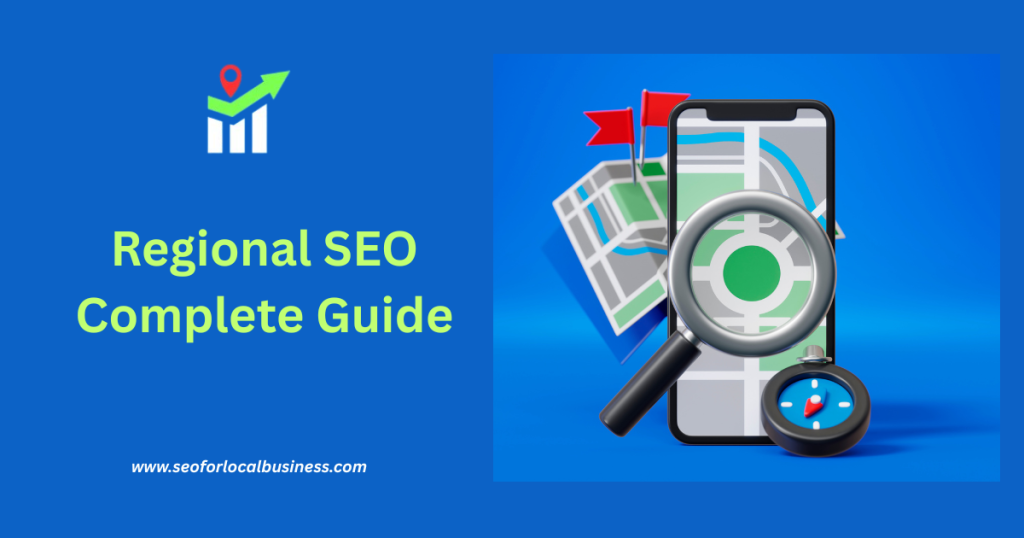Table of Contents
As search engines evolve, staying ahead of the curve is critical for any SEO agency aiming to drive results. With 2026 on the horizon, new algorithm updates, AI advancements, and shifting user behaviors are reshaping the SEO landscape. Our SEO Checklist for 2026 is a detailed, actionable guide covering on-page, off-page, and technical SEO tactics to help you dominate search rankings. This post includes a downloadable PDF checklist, expert insights, and strategies tailored to anticipated 2026 trends, ensuring your website thrives in a competitive digital world.
Why the SEO Checklist for 2026 Matters
The SEO Checklist for 2026 is designed to address emerging trends, such as AI-driven content analysis, increased emphasis on E-E-A-T (Experience, Expertise, Authoritativeness, Trustworthiness), and the growing importance of voice and visual search. Google’s algorithms are expected to prioritize user experience metrics, semantic understanding, and ethical link-building practices more than ever. Whether you’re optimizing for a small business or a global brand, this checklist will help you streamline your efforts, boost organic traffic, and attract high-quality backlinks. Let’s dive into the SEO Checklist for 2026 to ensure your site is future-proof.
On-Page SEO Checklist for 2026
On-page SEO is the backbone of any successful strategy, focusing on optimizing content and structure to align with user intent and search engine expectations. The SEO Checklist for 2026 emphasizes creating authoritative, user-centric content that stands out in a crowded digital space.
1. Master Search Intent Optimization
- Analyze User Intent: Use tools like Ahrefs’ Keywords Explorer or Google’s People Also Ask to identify whether users seek informational, navigational, transactional, or commercial investigation content. For example, a query like “best SEO tools 2026” signals commercial intent, requiring a comparison-focused post.
- Tailor Content to Intent: Create content that directly addresses user needs. For instance, a blog post titled “How to Use the SEO Checklist for 2026” should include practical steps and examples.
- Incorporate Semantic Keywords: Use tools like LSIGraph to find related terms (e.g., “SEO strategies 2026” or “algorithm updates”) to boost topical relevance.
- Answer User Questions: Structure content to target featured snippets by answering questions concisely under H2 or H3 headings, like “What’s new in the SEO Checklist for 2026?”
2. Strengthen E-E-A-T Signals
- Highlight Author Expertise: Include detailed author bios with qualifications, such as “John Doe, SEO Expert with 10+ Years of Experience,” and link to their LinkedIn or X profiles.
- Cite Authoritative Sources: Reference studies from trusted sites like Moz, Search Engine Journal, or .edu domains to build credibility. For example, cite a 2025 Moz study to support your SEO Checklist for 2026 tactics.
- Showcase Transparency: Add “About Us” pages with clear business details, contact information, and client testimonials to enhance trustworthiness.
- Update Content Regularly: Refresh evergreen posts to reflect 2026 trends, such as new ranking factors or AI content guidelines, to maintain relevance.
3. Optimize for Voice and Conversational Search
- Target Long-Tail Queries: Focus on natural language phrases like “What’s the best SEO checklist for 2026?” to align with voice search trends.
- Implement FAQ Schema: Use structured data to mark up question-and-answer content, increasing chances of appearing in voice search results. Example: Add schema for “How do I optimize my site for 2026 algorithms?”
- Create Conversational Content: Write in a conversational tone, using tools like Grammarly to ensure clarity and readability.
- Optimize for Local Voice Search: Include location-based keywords (e.g., “SEO services in New York 2026”) for businesses targeting local audiences.
4. Craft High-Quality, Engaging Content
- Write In-Depth Articles: Aim for 2,500–3,000 words for comprehensive guides like this SEO Checklist for 2026, covering all aspects of a topic.
- Incorporate Multimedia: Add custom infographics (e.g., “The SEO Checklist for 2026 Workflow”), videos, or interactive quizzes to boost engagement and dwell time.
- Optimize Meta Tags: Write compelling title tags (55–60 characters) like “Ultimate SEO Checklist for 2026: Rank Higher” and meta descriptions (150–160 characters) that include the SEO Checklist for 2026 keyword.
- Use Engaging CTAs: Encourage readers to share the post on X to increase visibility.
5. Enhance Internal Linking Structure
- Build Topic Clusters: Create pillar pages (e.g., “Complete Guide to SEO in 2026”) and link to related subtopics like “Technical SEO Checklist for 2026.”
- Use Descriptive Anchor Text: Link to relevant pages with keywords like “SEO Checklist for 2026” instead of generic phrases like “click here.”
- Audit Internal Links: Use Screaming Frog to identify orphaned pages or broken links that could harm user experience.
- Create Resource Hubs: Develop a dedicated section for SEO resources, linking to your site and other tools.
Off-Page SEO Checklist for 2026
Off-page SEO builds your site’s authority through external signals like backlinks, brand mentions, and social engagement. The SEO Checklist for 2026 focuses on ethical, sustainable strategies to boost your site’s reputation.
1. Secure High-Quality Backlinks
- Leverage Digital PR: Pitch original research, like a “2026 SEO Trends Report,” to journalists via platforms like HARO or Qwoted. For example, a study on “How AI Impacts SEO in 2026” could attract links from tech blogs.
- Guest Posting: Contribute to high-authority sites like Search Engine Land or HubSpot, linking back to your content.
- Broken Link Building: Use Ahrefs to find broken links on relevant sites, then suggest yours as a replacement.
- Create Linkable Assets: Develop infographics, case studies, or free tools (e.g., “SEO Checklist for 2026 Calculator”) that naturally attract links.
2. Amplify Brand Mentions
- Monitor Unlinked Mentions: Use Google Alerts or Brand24 to track mentions of your brand, then request backlinks from those sites.
- Engage on X: Share snippets on X with hashtags like #SEO2026 or #DigitalMarketing to attract attention from influencers.
- Build Local Citations: Ensure your business is listed on directories like Yelp or Google Business Profile with consistent NAP (Name, Address, Phone) details.
3. Collaborate with Influencers and Communities
- Partner with SEO Influencers: Invite experts to contribute to a roundup post like “Top SEO Experts Share Their 2026 Predictions,” linking to your SEO Checklist for 2026.
- Engage in Niche Communities: Share your checklist in SEO-focused Reddit threads (e.g., r/SEO) or Slack groups like Online Geniuses, ensuring you provide value without spamming.
- Host Webinars or Podcasts: Create content featuring industry leaders discussing the SEO Checklist for 2026, encouraging them to share with their audiences.
4. Leverage User-Generated Content
- Encourage Reviews: Ask clients to leave reviews on Google or Trustpilot, linking as a resource.
- Run Contests: Launch a contest on X, asking users to share, linking back to your blog.
- Feature Testimonials: Publish client success stories that reference your site, encouraging them to share with their networks.
Technical SEO Checklist for 2026
Technical SEO ensures your site is accessible, fast, and secure for both users and search engine crawlers. The SEO Checklist for 2026 addresses advanced technical requirements, including AI-driven crawling and mobile-first indexing.
1. Optimize for Core Web Vitals
- Improve Largest Contentful Paint (LCP): Optimize server response times using a CDN like Cloudflare and compress images with WebP format. Aim for LCP under 2.5 seconds.
- Reduce First Input Delay (FID): Minimize JavaScript execution time by deferring non-critical scripts.
- Stabilize Cumulative Layout Shift (CLS): Set explicit dimensions for images and ads to prevent layout shifts.
- Test with Google’s PageSpeed Insights: Regularly audit your site to ensure compliance with 2026 Core Web Vitals standards.
2. Prioritize Mobile Usability
- Adopt Responsive Design: Use CSS media queries to ensure your site adapts to all devices, from smartphones to tablets.
- Test Mobile Experience: Run Google’s Mobile-Friendly Test to identify issues like text too small or buttons too close together.
- Optimize for Touch Navigation: Ensure buttons are at least 48px wide and spaced 8px apart for easy tapping.
- Accelerate Mobile Pages: Consider AMP (Accelerated Mobile Pages) for content-heavy pages if relevant in 2026.
3. Implement Advanced Structured Data
- Add Schema Markup: Use JSON-LD to implement schema for articles, products, reviews, FAQs, and How-To content.
- Support Visual Search: Implement ImageObject schema to optimize images for Google Lens and other visual search tools.
- Validate Schema: Use Google’s Rich Results Test and Schema Markup Validator to ensure correct implementation.
- Prepare for AI Crawlers: Structure data in a machine-readable format to align with AI-driven search engines in 2026.
4. Enhance Site Security
- Enforce HTTPS: Ensure all pages use a valid SSL certificate, redirecting HTTP to HTTPS.
- Update CMS and Plugins: Regularly patch WordPress, Shopify, or other platforms to prevent vulnerabilities.
- Implement Security Headers: Add headers like Content-Security-Policy (CSP) and X-Frame-Options to protect against attacks.
- Monitor for Hacks: Use tools like Sucuri or Wordfence to detect malware or unauthorized changes.
5. Fix Crawl and Indexation Issues
- Audit with SEO Tools: Use Sitebulb or Screaming Frog to identify 404 errors, redirect loops, or duplicate content.
- Optimize XML Sitemap: Include only high-value pages in your sitemap and submit it to Google Search Console.
- Check Robots.txt: Ensure it allows crawlers to access key pages while blocking irrelevant ones (e.g., admin pages).
- Monitor Index Coverage: Use Google Search Console to fix pages marked as “Crawled – not indexed” or “Discovered – not indexed.”
6. Prepare for Visual and Video Search
- Optimize Images: Use descriptive file names (e.g., seo-checklist-2026.png) and alt text with keyword.
- Create Video Content: Produce short-form videos (e.g., “How to Use the SEO Checklist for 2026”) and optimize with video schema.
- Host on Multiple Platforms: Upload videos to YouTube and TikTok, embedding them on your blog with backlinks.
Bonus: Emerging Trends for the SEO Checklist for 2026
To future-proof your strategy, the SEO Checklist for 2026 includes these cutting-edge tactics:
1. Optimize for AI-Driven Search
- Understand AI Algorithms: Prepare for Google’s advancements in AI (e.g., MUM or LaMDA successors) by creating content that answers complex, multi-intent queries.
- Avoid AI Content Pitfalls: Ensure AI-generated content is heavily edited for originality, as search engines may penalize low-quality AI output in 2026.
- Use AI Tools: Leverage tools like Jasper or SurferSEO to analyze content gaps and optimize.
2. Focus on Zero-Click Searches
- Target Position Zero: Structure content with clear H2/H3 headings, tables, and lists to rank in featured snippets.
- Optimize for Knowledge Panels: Provide structured data to appear in Google’s knowledge graph for brand-related queries.
- Create FAQ Pages: Answer common questions related to capture zero-click traffic.
3. Embrace Sustainability in SEO
- Highlight Green Practices: If applicable, showcase your agency’s eco-friendly initiatives (e.g., carbon-neutral hosting) to align with user values.
- Optimize for Efficiency: Reduce server load with lightweight themes and caching to appeal to environmentally conscious users.
- Promote on X: Share with hashtags like #GreenSEO to attract eco-focused audiences.
Download Your SEO Checklist for 2026
To simplify your optimization process, we’ve created a downloadable PDF version of the SEO Checklist for 2026. This checklist condenses all on-page, off-page, technical, and emerging tactics into a user-friendly format, perfect for quick reference or team collaboration. Download the SEO Checklist for 2026 PDF.
How to Implement the SEO Checklist for 2026
- Conduct a Site Audit: Use tools like Google Analytics 4, Google Search Console, or SEMrush to assess your current SEO performance.
- Prioritize High-Impact Tasks: Start with technical fixes (e.g., Core Web Vitals) and high-traffic pages for quick wins.
- Assign Responsibilities: Divide tasks among your team (e.g., content creators, developers, outreach specialists).
- Track and Measure: Monitor rankings, organic traffic, and backlinks using Ahrefs or Moz to evaluate the checklist’s impact.
- Stay Informed: Follow SEO thought leaders on X and subscribe to blogs like Search Engine Journal to keep up with 2026 updates.
Why the SEO Checklist for 2026 Is Your Key to Success
The SEO Checklist for 2026 is built to address the unique challenges of the evolving search landscape:
- AI-Powered Algorithms: Search engines will rely more on AI to evaluate content quality, intent, and relevance.
- User-Centric Metrics: Core Web Vitals, mobile usability, and dwell time will remain critical ranking factors.
- Ethical SEO Practices: White-hat strategies like high-quality backlinks and transparent content will dominate in 2026.
- Emerging Search Types: Voice, visual, and zero-click searches will require new optimization approaches.
By following this checklist, you’ll position your website to rank higher, attract more traffic, and earn valuable backlinks from authoritative sites. Need expert help? Contact our SEO agency to execute the SEO Checklist for 2026 and drive measurable results for your business.




